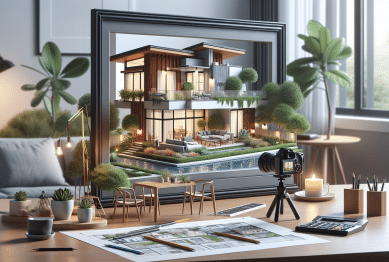Discover why tiny homes are reshaping urban living. This in-depth guide explains what makes them appealing, how zoning laws shape your options, and practical tips for affordability and maximizing space. If you’re curious about alternative city housing, these insights may inspire your next move.
What Makes Tiny Homes Popular In Urban Areas?
Urban populations continue to rise. Land prices climb. Housing options grow more expensive each year, especially in dense cities where space comes at a premium. In this context, tiny homes have caught the attention of many looking for affordable housing solutions. With clever design and minimal square footage, these compact dwellings present an alternative that fits smaller lots and urban infill zones.
The appeal of tiny homes lies not just in their lower cost, but also in the lifestyle shift they encourage. Residents are often drawn to the simplicity and reduced clutter. Living in a tiny house can bring about a sense of freedom—free from excess belongings and burdensome utility bills. Additionally, their mobility in some cases allows residents to adapt quickly to changing work or family needs. For many, it’s not just about affordable housing, but also about gaining flexibility. (Source: https://www.huduser.gov/portal/pdredge/pdr-edge-featd-article-081314.html)
Environmental concerns add another dimension. Tiny homes typically consume less energy, generate fewer emissions, and promote responsible consumption. Sustainable materials and energy-efficient features like solar panels are common inclusions. This conscious approach resonates with eco-minded city dwellers who want to limit their environmental impact. With so many benefits, the tiny house trend is more than just a passing fad—it’s carving out a niche in the real estate market.
Understanding Zoning Laws And Building Codes For Tiny Homes
Even with rising popularity, urban tiny home developments face legal hurdles. Zoning ordinances and building codes often determine what is possible—and where. Traditional zoning tends to favor single-family homes on larger lots, making it tricky to find locations that explicitly allow tiny houses. Some municipalities, however, have started to adjust their policies, carving out space for smaller, more efficient housing forms. Research is essential before you invest in a plot or build your own small home. (Source: https://www.planning.org/knowledgebase/tinyhomes/)
Common regulations may address minimum square footage, required plumbing and sanitation, safety standards, and whether your home can be on wheels. Urban planners frequently debate how best to integrate these options. Some cities pilot accessory dwelling unit (ADU) programs to provide affordable, flexible living spaces within existing neighborhoods. These programs often overlap with the movement for tiny homes, giving people additional options if they meet local requirements. (Source: https://www.huduser.gov/portal/pdredge/pdr-edge-featd-article-ADUs.html)
Making sense of these policies can take perseverance. Attending city council meetings, talking to zoning officials, and studying the municipal code all help residents advocate for more flexible housing. This effort is needed to expand the options available to renters and buyers. New legislation in some cities signals a shift in attitudes, but due diligence remains vital for anyone considering a tiny home as their next residence. Always verify local rules before purchase or construction.
Affordability Factors And Budgeting For Urban Tiny Homes
One driving force behind the growth of tiny homes in cities is affordability. Traditional homes in urban real estate markets often require large down payments and high monthly expenses. Tiny homes, by contrast, can be much more attainable thanks to their reduced size and lower construction cost. Sometimes, a tiny home can be built or delivered for less than the cost of a city apartment’s security deposit. (Source: https://files.hudexchange.info/resources/documents/Tiny-Home-Guidebook.pdf)
Budgeting for a tiny home is quite different than preparing for a conventional home purchase. Costs span materials, land, site preparation, permits, utilities, interior finishes, and furnishings that fit the space. Financing options may differ as well. Some lenders specialize in manufactured or modular housing, while others require creative solutions like personal loans or savings. Insurance can also play a role, with some companies offering specific policies for small dwellings.
Utility costs and ongoing maintenance generally remain much lower for tiny homes. Their compact size means less energy to heat or cool, and efficient appliances maximize every kilowatt and gallon of water. Residents can choose off-grid options, like solar panels or composting toilets, to keep monthly bills even lower. This focus on efficiency and budgeting can empower people to take control of their living expenses while staying close to city resources.
Smart Space Planning And Creative Design
What sets city-based tiny homes apart is their extraordinary use of space. Architects and designers often work closely with owners to optimize every square foot. Every corner matters. Lofted sleeping areas, wall beds, under-stair storage, and built-in seating represent just a few of the innovative features that make life in a tiny space both practical and stylish.
Natural light plays a critical role too. Large windows or skylights create an airy feeling, despite limited square footage. Clever storage—drawers nested within furniture, hidden compartments, convertible desks—further extends usability. Flexibility reigns as spaces serve multiple purposes: a dining table becomes a workstation; a sofa converts into a guest bed. These features allow residents to enjoy city convenience without sacrificing comfort. (Source: https://www.epa.gov/smartgrowth/smart-growth-and-tiny-homes)
Sustainability, again, is a recurring theme. Using reclaimed or green materials, integrating rainwater catchment, and planning for passive heating or cooling help tiny homes meet the needs of environmentally conscious city dwellers. Thoughtful design doesn’t stop at the front door—outdoor patios, rooftop gardens, or communal green spaces can extend the practical space for everyone in the neighborhood.
Tiny Home Communities: Building Connection In The City
While many tiny homes offer privacy and independence, a rising trend is the development of tiny home communities within or near urban centers. Unlike isolated single units, these arrangements provide shared amenities like gardens, workshops, or laundry, along with a built-in neighborhood network. This approach allows residents to benefit from both individual space and collective resources.
Some cities and nonprofit organizations see these communities as a solution for homelessness, transitional housing, or affordable options for working-class residents. They may pilot villages that blend tiny homes with social services and communal facilities. Residents in these communities often report increased well-being and a strong sense of belonging that can sometimes be lacking in traditional apartment complexes. (Source: https://nlihc.org/resource/homelessness-reduction-efforts-include-tiny-homes)
Zoning challenges do persist. Community leaders partner with local officials, architects, and social workers to navigate the legal landscape and build support. The concept of cooperative housing is resurging, fostered by the popularity of these compact communities. This trend demonstrates that smart, small-scale housing solutions can help meet the evolving needs of city populations—and that innovation doesn’t mean sacrificing connection or comfort.
What To Consider Before Choosing Urban Tiny Home Living
Tiny home living is not for everyone. While the advantages are real—lower costs, simpler living, reduced impact—some people find the transition challenging. Downsizing requires thoughtful decisions about what’s truly important. Space constraints may challenge family life, hosting guests, or pursuing certain hobbies. Sound privacy and noise insulation also rank high on the list of considerations, especially in dense neighborhoods.
Practical preparation can ease this transition. Try temporarily living in a smaller space, staging a declutter, or designing a floor plan to scale before committing. Reading testimonials, visiting model tiny homes, or exploring short-term rentals can provide valuable insight. Be sure to research nearby communities, accessibility to public transportation, and proximity to basic services. These logistical details can make a significant difference in day-to-day satisfaction.
Legal, financial, and insurance due diligence must never be overlooked. Each city will have unique regulations about where and how tiny homes may be installed; ignoring them could create costly setbacks. Consulting with a real estate professional or urban planner—plus reading up on case studies—will help avoid surprises. Informed decisions pave the way to meaningful, successful urban tiny home living.
References
1. U.S. Department of Housing and Urban Development. (n.d.). The Tiny House Movement. Retrieved from https://www.huduser.gov/portal/pdredge/pdr-edge-featd-article-081314.html
2. American Planning Association. (n.d.). Tiny Homes KnowledgeBase. Retrieved from https://www.planning.org/knowledgebase/tinyhomes/
3. U.S. Department of Housing and Urban Development. (n.d.). Accessory Dwelling Units Guide. Retrieved from https://www.huduser.gov/portal/pdredge/pdr-edge-featd-article-ADUs.html
4. HUD Exchange. (n.d.). A Community Guide to Tiny Homes. Retrieved from https://files.hudexchange.info/resources/documents/Tiny-Home-Guidebook.pdf
5. Environmental Protection Agency. (n.d.). Tiny Homes and Smart Growth. Retrieved from https://www.epa.gov/smartgrowth/smart-growth-and-tiny-homes
6. National Low Income Housing Coalition. (n.d.). Homelessness Reduction Efforts Include Tiny Homes. Retrieved from https://nlihc.org/resource/homelessness-reduction-efforts-include-tiny-homes









